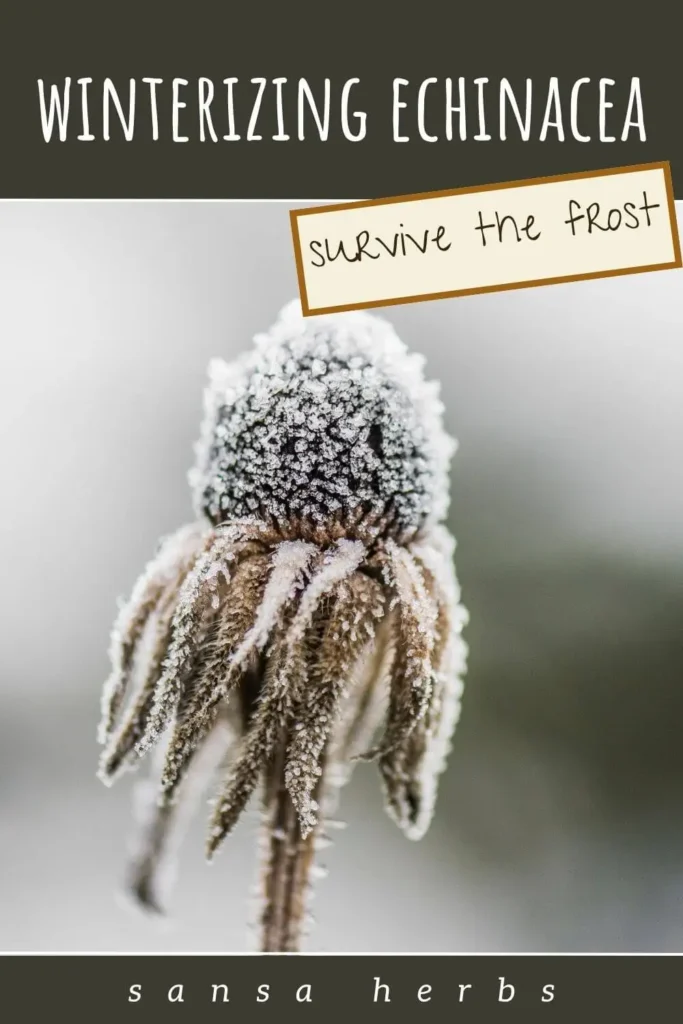Properly winterizing echinacea plants is an essential task for any gardener hoping to see these beautiful perennials return year after year. As the colder months approach, taking the time to prepare your coneflowers for dormancy will significantly improve their chances of surviving harsh conditions and thriving again in the spring. Key steps in winterizing echinacea plants include trimming back dead or dying foliage, applying a protective layer of mulch around the base, and ensuring the soil has adequate drainage to prevent waterlogging during winter rains or snowmelt.
For those interested in the complete lifecycle of these wonderful additions to the garden, or if you’re considering increasing your echinacea population, our detailed guide on how to grow echinacea from seed offers valuable insights. This post covers everything from selecting quality seeds and the necessary stratification process to the best methods for planting and nurturing young echinacea seedlings, providing a fulfilling way to cultivate these plants from the very beginning.

Why Winterizing Echinacea Plants Matters
Echinacea (aka coneflower) is a hardy perennial, but “hardy” doesn’t mean indestructible. In regions with harsh winters, freezing temperatures, wet soil, and rapid thaw-freeze cycles can:
- Uproot plants via frost heave (soil expansion pushes roots upward).
- Rot crowns if moisture pools around the base.
- Invite pests like voles that feast on roots when food is scarce.
Winterizing echinacea plants isn’t just about survival—it’s about setting the stage for vigorous spring growth and prolific blooms.
Did you know? Echinacea is prized not just for its blooms but for its immune-boosting roots. If you’re cultivating a medicinal garden, Nicole Apelian’s Medicinal Garden Kit (which includes Echinacea seeds alongside 9 other healing herbs like yarrow and calendula) offers a ready-made apothecary starter pack. Winterizing ensures your Echinacea survives to maturity, so you can harvest its potent roots in future seasons.
Step 1: Prune with Purpose (Timing Is Key)
Do:
- Wait until after the first hard frost to prune. Cutting back too early can stimulate new growth vulnerable to frost.
- Trim stems to 3–4 inches above the soil line using clean, sharp shears.
- Leave seed heads intact if you want to feed birds (or save seeds for spring planting).
Don’t:
- Prune in fall if you live in mild climates (zones 8+). Let foliage protect crowns from rare frosts.
- Compost diseased stems. Burn or trash them to prevent fungal spores from overwintering.
Step 2: Mulch Like a Master Insulator
Mulch is your plant’s winter armor—it regulates soil temperature, locks in moisture, and prevents frost heave. But how you mulch matters.
What to Use:
- Shredded leaves (free and nutrient-rich).
- Straw (lightweight and breathable).
- Pine boughs (natural, decorative, and excellent at trapping snow).
How to Apply:
- Wait until the ground freezes (mulching too early traps warmth, confusing plants).
- Pile 4–6 inches of mulch around the base, avoiding direct contact with stems.
- Extend the mulch layer 6–12 inches beyond the plant’s drip line.
Avoid:
- Heavy materials like whole leaves or wood chips (they mat down and suffocate crowns).
- Over-mulching (too much insulation can delay spring growth).
Step 3: Cold-Climate Hacks for Extreme Winters
If you’re in zones 3–5 (-40°F winters), basic mulching might not cut it. Try these advanced tactics:
A) Create a Windbreak
- Use burlap or frost cloth to wrap plants loosely, shielding them from drying winds.
- Plant Echinacea near a south-facing wall to absorb daytime heat.
B) Prevent Frost Heave
- Cover the soil with cardboard or boards after mulching to stabilize temperature swings.
- Water deeply in late fall (moist soil freezes more evenly, reducing upheaval).
C) Deter Rodents
- Sprinkle cayenne pepper around plants to repel voles.
- Install wire mesh cages over crowns (buried 3 inches deep to block burrowers).
You may enjoy: How to Transplant Echinacea Seedlings and Avoid Transplant Shock: A Step-by-Step Survival Guide
Common Winterizing Mistakes to Avoid
- Pruning too early: Tempted to tidy up in fall? Resist! Faded stems protect crowns.
- Neglecting drainage: Wet soil + freezing = root rot. Amend clay-heavy soil with grit or sand.
- Using plastic covers: Traps moisture and heat, creating a fungal paradise.
Spring Wake-Up Call: What to Do When Thaw Arrives
- Remove mulch gradually as temperatures rise (late winter/early spring).
- Inspect crowns for rot or pest damage. Trim dead tissue with sterilized tools.
- Apply compost to kickstart growth once new shoots emerge.
Your Echinacea’s Winter Survival Kit
Winterizing Echinacea plants is a sustainable investment in next year’s blooms. By pruning strategically, mulching wisely, and outsmarting cold-climate threats like frost heave and rodents, you’ll ensure your coneflowers return with unmatched vigor.
With these tips, your Echinacea won’t just endure winter—it’ll emerge ready to dazzle pollinators, uplift your garden, and even provide medicinal benefits for years to come.